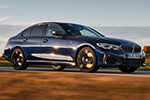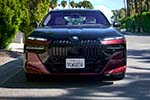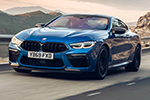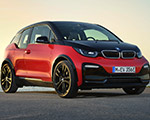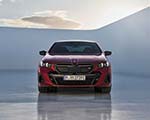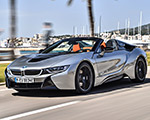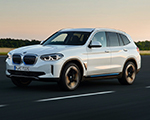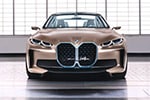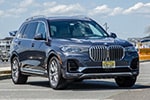 In This Article
In This ArticleBMW has dabbled with hydrogen for decades — from the Hydrogen 7 luxury sedans of the 2000s to more recent prototypes that quietly tested the limits of fuel cell technology. Now, the company is preparing for its first-ever production hydrogen car. In 2028, the BMW iX5 Hydrogen, based on the upcoming G65-generation X5, will roll into showrooms. It won’t be just another drivetrain option. For BMW, it marks a statement: that the future of mobility will not be dominated by a single solution.
We sat down with Michael Rath, Vice President Hydrogen Vehicles BMW Group, to discuss what BMW has learned so far, how the iX5 will differ from earlier prototypes, and why the Munich brand believes hydrogen belongs alongside EVs, hybrids, and combustion cars.
Lessons from the Pilot Fleet
BMW’s pilot fleet of iX5 Hydrogen test cars was deployed across 20 countries and clocked more than one million kilometers. Rath described the results as both encouraging and educational. “We found out that this technology is very mature and robust,” he said. “It was very surprising that the entire system is so robust at this early stage of development. Customers also loved the driving experience — the combination of electric smoothness with faster refueling.”
Still, the test program revealed some minor practical challenges. “There were some minor points we found out in terms of freeze preparation — how do you manage all the water within the system when temperatures drop? That’s something we considered for the series model.”
Why the X5?
Why launch hydrogen in the X5? Rath said the choice was deliberate. “The iX5 will be available with five drivetrains: combustion engine, diesel, plug-in hybrid, battery electric, and hydrogen fuel cell,” he explained. “The X5 is a volume pillar of our portfolio, running all across the planet. And the bigger the car, the bigger the resistance — the better hydrogen fits. It’s the right technology.”
The decision also highlights the versatility of BMW’s CLAR architecture, which was designed from the start to accommodate multiple powertrains.
A Third-Generation Fuel Cell, Built with Toyota
BMW’s hydrogen development continues in partnership with Toyota. The 2028 iX5 will debut a third-generation fuel cell system that Rath described as a major leap. “We jointly developed the system with Toyota, and both of our companies bring all our competencies into this cooperation. We did a huge leap from the second generation to the third in terms of efficiency, power, and especially volume. The system is 25% smaller than before.”
The downsizing wasn’t achieved by a single breakthrough, but by incremental improvements across the system. “We reduced them in all dimensions — the water pump, the compressor, the air subsystem. Basically, across all components we saved volume.”
Packaging and Everyday Usability
While integrating hydrogen tanks could raise concerns about interior or luggage space, Rath stressed that the 2028 iX5 Hydrogen will feel no different from its combustion or electric counterparts in everyday usability. “This car will be, from a customer point of view, fully like all other drivetrains in terms of luggage and compartments,” he said. “There will be no restrictions dedicated for hydrogen.”
When pressed about the tank layout, Rath remained tight-lipped, declining to share specifics. He did, however, stress that customers won’t notice a difference in usability compared to ICE or BEV X5 models. Range will also improve. “We really work hard on the range to provide more than now, because it’s very important at an early stage when station density is low.”
Infrastructure: The Biggest Hurdle
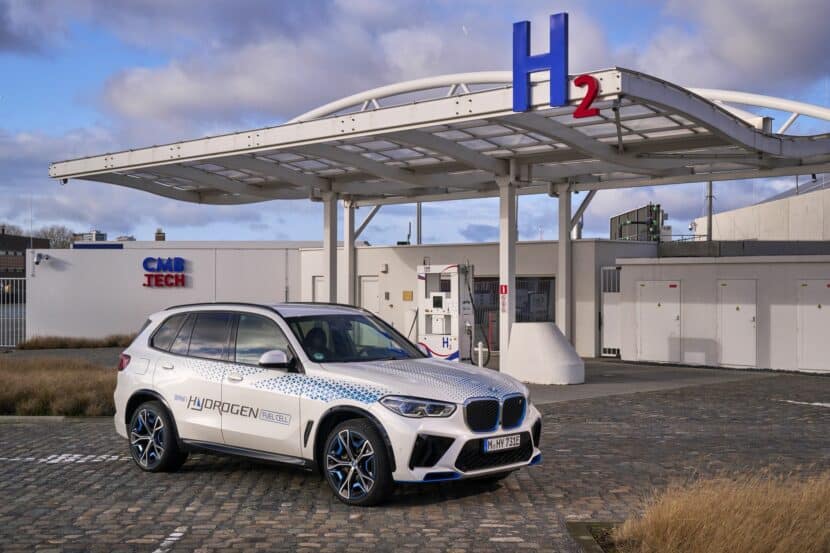 On Location BMW iX5 Hydrogen Antwerp
On Location BMW iX5 Hydrogen AntwerpNo discussion of hydrogen is complete without addressing infrastructure. BMW knows that without stations, customers won’t commit. Rath explained that BMW is partnering with energy providers and other automakers to make fueling viable.
“We have an initiative partnering with several companies who are into the hydrogen game, to really combine all our demands at the pump,” he said. “We team up to bundle demands from all vehicle types and define locations where refueling stations can work on a profitable basis, so they’re coming to stay.”
When pressed on whether BMW might explore dealer-based refueling pilots — for instance, installing hydrogen pumps at large dealerships in early-adopter regions — Rath was cautious. “Maybe it’s too early to talk about,” he admitted, declining to give specifics.
Globally, hydrogen availability remains uneven. “Japan and South Korea already have very good density,” Rath noted. “The West Coast of the U.S. is also promising, though California is struggling a little because prices are too high — around $36 per kilogram.”
In Europe, prices vary. Rath cited €18/kg in Antwerp, though he admitted that is still expensive. “We think a price point at roughly €10 is feasible,” he added. “At that level, hydrogen is competitive with gasoline.”
BMW believes economies of scale will help. “Right now, prices are very much driven by distribution costs and running costs at the pump. Once there’s turnover, the price scales down. It’s not really tied to the current purchasing price of hydrogen.”
As for density, Rath gave a number: “In Germany, we see roughly 500 stations as a minimum viable network to have a very good use case for customers without too many roundabouts.”
The Customer Profile
Who is BMW building the iX5 Hydrogen for? Rath described the target buyers as those who want the advantages of electric driving but need more flexibility. “We see the car appropriate for those who want to go electric but need faster refueling as a feature,” he said. “Especially for towing cases, in cold climates, and maybe also for fleets.”
He stressed that incentives won’t define the market. “You cannot really plan around incentives because they are turning so fast. In most regions, incentives for fuel cell electric vehicles are very similar to battery-electric vehicles.”
Advantages Over BEVs
For those wondering why hydrogen is needed at all, Rath pointed to its unique benefits. “The main advantage is that the car drives fully like a battery electric vehicle — smooth, silent, instant acceleration — and at the same time, it refuels like a gasoline engine in four minutes,” he explained. “It combines the advantages of both worlds.”
Cold-weather performance is another edge. “In a fuel cell system, you have excess energy in the conversion of hydrogen and oxygen. You can use that to heat the car. In a battery-electric car, you need a dedicated heater that consumes energy.”
On weight, Rath admitted the numbers are still under development. “The first iX5 Hydrogen was roughly in the same range of weight as the plug-in hybrid. We haven’t disclosed the production weight yet for the new car.”
Beyond the X5
So is this just the start? Rath didn’t confirm additional hydrogen models, but he emphasized the system’s scalability. “We are now launching the first car, and we haven’t decided yet on the further rollout,” he said. “But the system is designed to be rolled out in several courses.”
When asked what he would tell a skeptical EV customer standing in a dealership, Rath’s answer was simple: “Not changing your habits. You can stick with your habits like you’re used to from gasoline cars. Everything stays the same, and at the same time, you have this instant, smooth acceleration.”
BMW’s Hydrogen Vision
BMW calls this its technology-open approach. Rather than bet on a single drivetrain, the company believes customers should decide — and that different markets require different solutions. The iX5 Hydrogen isn’t meant to replace battery EVs, but to complement them. In larger vehicles, in regions with cold climates, or in use cases like towing, hydrogen offers advantages a BEV can’t.
Rath summed up the philosophy: “Once you can refuel quickly, you don’t have to think around the entire process. That’s the message.”
The Road to 2028
The next three years will be decisive. Hydrogen fueling networks must grow, costs must fall, and customer awareness must rise. Rath is optimistic.
“There’s lots of movement going on all across the world,” he said. “We are very confident there will be further growth, especially from transport and commercial applications.”


























